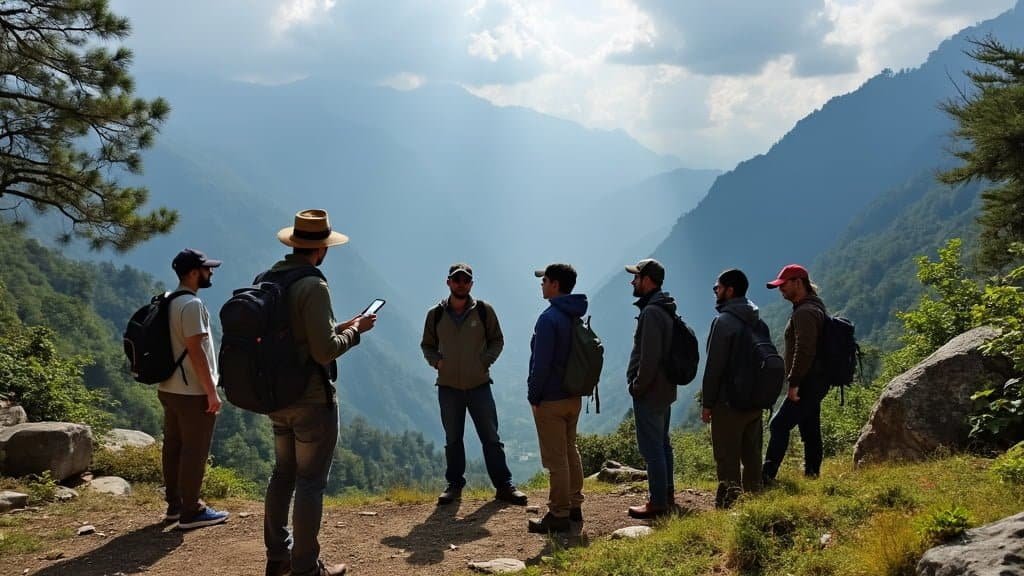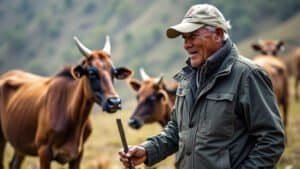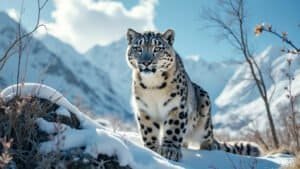Introduction
Community workshops are a vital tool in the conservation of snow leopards, an elusive and endangered species. These workshops play a significant role in educating and engaging local communities, which are often the most impacted by snow leopard activities
In this article, we will explore how education through workshops fosters awareness, the strategies used to involve local communities, and the essential topics covered in these workshops
We will also examine the challenges addressed and the tangible outcomes that highlight the effectiveness of these workshops in promoting snow leopard conservation
The Role of Education in Snow Leopard Conservation
Education is a cornerstone of snow leopard conservation efforts. As these majestic animals face increasing threats from habitat loss, poaching, and climate change, raising awareness through education becomes crucial
Community workshops serve as an effective platform for disseminating knowledge about snow leopards, their behavior, and the ecological importance they hold in mountainous ecosystems. By educating local communities, who are often the first line of defense in conservation, these workshops aim to foster a sense of stewardship and responsibility toward protecting snow leopards
Importance of Awareness in Conservation Efforts
Raising awareness is one of the most direct ways to influence conservation outcomes. When communities understand the ecological role of snow leopards as apex predators that help maintain the balance in their ecosystems, they are more likely to support conservation initiatives
These workshops emphasize the interconnectedness of species within an ecosystem, illustrating how the decline of snow leopards can lead to overpopulation of prey species, which in turn affects vegetation and the overall health of the environment. By making these connections clear, workshops help participants grasp the broader impact of snow leopard conservation on their own livelihoods and the environment
Research has shown that awareness and education can significantly reduce negative attitudes toward wildlife. A study published in the Journal of Environmental Education (2019) found that targeted educational programs led to a 40% increase in positive attitudes toward predators like snow leopards among rural communities in Central Asia
This shift in perspective is crucial, as it translates into greater community involvement in conservation efforts, such as participating in anti-poaching patrols or supporting habitat preservation initiatives
Educational Approaches Used in Workshops
The methods used in these workshops are diverse, catering to different learning styles and community needs. Interactive activities, such as role-playing and group discussions, are common as they encourage active participation and engagement
Visual aids, including documentaries and presentations, help to illustrate the challenges faced by snow leopards and the importance of conservation. Additionally, storytelling—often using local legends or narratives—can make the content more relatable and memorable for participants
Workshops also often include practical demonstrations. For example, participants may learn about camera trapping, a non-invasive method used by researchers to monitor snow leopard populations. By involving community members in these scientific practices, the workshops not only educate but also empower locals to contribute to ongoing research and monitoring efforts
Incorporating traditional knowledge is another key approach. Many indigenous communities have coexisted with snow leopards for centuries and possess a wealth of knowledge about the species and its habitat
Workshops that integrate this knowledge alongside modern conservation techniques tend to be more effective, as they respect and build upon the existing cultural context
Benefits of Educating Local Communities
The benefits of educating local communities about snow leopard conservation are manifold. First, it helps to reduce human-wildlife conflict, which is a significant threat to snow leopards
When communities understand the reasons behind snow leopard behavior—such as predation on livestock due to reduced natural prey—they are more likely to adopt preventive measures, such as improved livestock management practices, rather than resorting to retaliatory killings
Education also fosters a sense of ownership and pride in local wildlife. When communities are well-informed about the unique characteristics of snow leopards and their role in the ecosystem, they often develop a protective attitude toward the species. This can lead to community-led conservation initiatives, such as the establishment of conservation areas or the formation of local wildlife protection groups
Moreover, educated communities are better equipped to engage with external conservation organizations and government agencies. They can advocate for their own needs and priorities in conservation projects, ensuring that these initiatives are both effective and sustainable in the long term
For instance, the Snow Leopard Trust has successfully partnered with local communities in Mongolia to establish community-managed wildlife reserves, which have significantly reduced poaching incidents
Education through community workshops is therefore not just about imparting knowledge—it’s about building a collaborative approach to conservation where local communities play a central role in the protection and preservation of snow leopards
Engaging Local Communities in Snow Leopard Protection
Engaging local communities is critical for the successful conservation of snow leopards. These communities often live in close proximity to snow leopard habitats, making them both the most vulnerable to potential conflicts and the most vital allies in conservation efforts
Community engagement in snow leopard protection goes beyond education; it involves building partnerships, fostering trust, and encouraging active participation in conservation activities
Strategies for Community Involvement
Effective community involvement in snow leopard conservation relies on strategies that are inclusive, participatory, and culturally sensitive
One such strategy is the creation of Community Conservation Committees (CCCs), which empower local residents to take an active role in managing and protecting their natural resources
These committees typically consist of community leaders, herders, and other key stakeholders who work together to monitor snow leopard populations, prevent poaching, and implement conservation initiatives
Another successful strategy is the integration of community-based tourism, which provides economic incentives for conservation. By involving local communities in ecotourism projects, such as guided wildlife tours or homestay programs, these initiatives create alternative sources of income that are directly linked to the preservation of snow leopards and their habitats
This approach not only reduces the economic pressures that can lead to poaching but also fosters a sense of pride and ownership in local wildlife
Participatory research is another method that enhances community engagement. Local residents are trained to assist in scientific research activities, such as tracking snow leopards or collecting data on prey populations. This involvement not only provides valuable data for conservationists but also deepens the community’s understanding of and commitment to snow leopard conservation
Case Studies of Effective Community Engagement
Numerous case studies highlight the success of community engagement in snow leopard conservation. One notable example is the Snow Leopard Enterprises program initiated by the Snow Leopard Trust
This program works with local communities across Central Asia, helping them develop handicraft businesses in exchange for a commitment to protect snow leopards. The program has seen significant success in countries like Mongolia, where communities have reduced poaching and increased snow leopard populations as a result of their participation
Another successful initiative is the “Corbett Model” in Uttarakhand, India, which integrates local communities into conservation management
This model involves communities in patrolling, reporting illegal activities, and participating in decision-making processes regarding conservation strategies. The result has been a noticeable decrease in human-wildlife conflict and an increase in community-driven conservation actions
In Kyrgyzstan, the introduction of community-managed conservancies has had a profound impact. These conservancies, managed by local communities, cover large areas of snow leopard habitat and are key to reducing poaching and habitat degradation
Community members are trained as rangers and are involved in monitoring snow leopard populations using camera traps and other technologies. This model has proven highly effective in not only conserving snow leopards but also in promoting sustainable land-use practices
Building Trust and Collaboration
Trust is a foundational element in successful community engagement. Conservation organizations must work to build and maintain trust with local communities by demonstrating respect for local traditions, providing transparent information, and ensuring that the benefits of conservation efforts are equitably shared
This often involves long-term engagement and consistent communication, as well as the involvement of local leaders and respected figures who can act as intermediaries
Collaboration is also essential, both within communities and between communities and external stakeholders, such as conservation NGOs and government agencies. Collaborative efforts can take many forms, from joint patrols to co-management of protected areas
For example, in the Pamir Mountains of Tajikistan, local communities have partnered with international conservation organizations to establish the Pamir Conservancy, which is co-managed by local herders and conservationists. This collaborative approach has led to a reduction in poaching and has fostered a sense of shared responsibility for snow leopard conservation
Effective collaboration often requires addressing conflicts of interest and finding solutions that benefit both conservation goals and community needs. In some cases, this may involve negotiating agreements that allow for sustainable use of natural resources while protecting key snow leopard habitats
For instance, in Nepal’s Annapurna Conservation Area, grazing rights have been carefully managed to reduce the impact on snow leopard habitats while ensuring that local herders can maintain their livelihoods
Overall, engaging local communities in snow leopard protection is not only about reducing threats to these animals but also about empowering communities to take ownership of their natural heritage. By involving communities as active participants in conservation, these efforts are more likely to be sustainable and effective in the long term
Key Topics Covered in Snow Leopard Awareness Workshops
Snow leopard awareness workshops cover a range of crucial topics designed to educate and empower communities living near snow leopard habitats
These workshops aim to provide participants with a comprehensive understanding of snow leopards, the threats they face, and the role that local communities can play in their conservation
By focusing on key areas such as snow leopard behavior, human-wildlife conflict, and conservation laws, these workshops ensure that participants are well-informed and equipped to contribute to conservation efforts
Understanding Snow Leopard Behavior and Habitat
One of the primary topics covered in snow leopard awareness workshops is the behavior and ecology of snow leopards
Participants learn about the snow leopard’s role as a keystone species in mountainous ecosystems, which means that their presence or absence has a significant impact on the overall health of the environment. The workshops explain how snow leopards help to regulate prey populations, which in turn influences vegetation and the broader ecological balance
Workshops also delve into the specific habitats that snow leopards prefer, typically rugged, high-altitude regions with steep cliffs and sparse vegetation. Understanding these habitat preferences helps communities recognize and protect critical snow leopard territories
Participants are also educated on the snow leopard’s elusive nature and solitary behavior, which make them difficult to spot even in regions where they are relatively abundant
In addition to general information, workshops often provide training on identifying signs of snow leopard presence, such as tracks, scrapes, and scat
This knowledge is particularly important for herders and others who spend significant time in snow leopard habitats, as it enables them to monitor snow leopard activity and contribute to citizen science initiatives
Human-Wildlife Conflict and Mitigation Strategies
Human-wildlife conflict is a significant threat to snow leopards, as they sometimes prey on livestock, leading to economic losses for local communities. Workshops address this issue by educating participants on the causes of human-wildlife conflict and offering practical strategies to mitigate it
One common approach discussed in workshops is the use of predator-proof corrals, which are designed to protect livestock from snow leopard attacks, especially during the night
Workshops often include demonstrations on how to build and maintain these corrals, emphasizing their effectiveness in reducing livestock losses. The use of guard dogs, particularly specific breeds that are trained to protect livestock from predators, is also covered as a successful mitigation strategy
Another key strategy is the implementation of livestock insurance schemes. These programs, often developed in collaboration with conservation organizations, compensate herders for livestock losses due to snow leopard predation. By reducing the financial burden on herders, these schemes help to prevent retaliatory killings of snow leopards, thus fostering coexistence between humans and wildlife
Workshops also discuss community-based monitoring systems, where local residents are trained to track and report snow leopard sightings and incidents of livestock predation. This data is crucial for understanding the patterns of human-wildlife conflict and developing targeted interventions to address specific issues
Conservation Laws and Policies
Legal knowledge is another important topic covered in snow leopard awareness workshops
Participants are educated about national and international laws that protect snow leopards, such as the Convention on International Trade in Endangered Species of Wild Fauna and Flora (CITES), which prohibits the trade of snow leopards and their parts. Understanding these laws helps communities recognize the legal implications of poaching and illegal trade, and reinforces the importance of adhering to conservation regulations
Workshops also provide information on local and regional conservation policies, including protected area regulations and community-based conservation initiatives. Participants learn about the roles and responsibilities of different stakeholders, including government agencies, conservation NGOs, and local communities, in enforcing these policies
In some cases, workshops facilitate discussions on how existing laws and policies can be improved or adapted to better suit local contexts. This participatory approach encourages community members to engage in the policymaking process and advocate for policies that support both conservation goals and community needs
By covering these key topics, snow leopard awareness workshops play a critical role in equipping communities with the knowledge and tools needed to protect snow leopards and their habitats. These workshops not only increase awareness but also empower participants to take concrete actions that contribute to the long-term conservation of this iconic species
Challenges Addressed in Snow Leopard Conservation Workshops
Snow leopard conservation workshops are designed not only to raise awareness but also to address some of the most pressing challenges faced in protecting this endangered species
These challenges include poaching and illegal trade, habitat loss, and the need to balance conservation efforts with the livelihoods of local communities. By directly tackling these issues, the workshops aim to find practical, community-based solutions that ensure the survival of snow leopards in the wild
Addressing Poaching and Illegal Trade
One of the most significant threats to snow leopards is poaching, driven by the illegal trade in their pelts and body parts, which are highly valued on the black market
Snow leopard conservation workshops address this issue by educating participants on the devastating impact that poaching has on snow leopard populations and on the broader ecosystem. They also highlight the legal consequences of engaging in or supporting the illegal wildlife trade
Workshops often include discussions on the reasons behind poaching, which can range from financial incentives to a lack of awareness about the snow leopard’s endangered status. By understanding these motivations, workshop facilitators can tailor their messaging to dissuade potential poachers and encourage alternative livelihoods
For example, some workshops promote the development of sustainable income-generating activities, such as eco-tourism or handicraft production, as alternatives to poaching
In addition to education, workshops may involve training community members in anti-poaching techniques, such as setting up patrols or reporting suspicious activities to authorities. These community-based enforcement efforts have proven effective in several regions. For instance, in parts of India and Mongolia, community patrols supported by conservation NGOs have significantly reduced poaching incidents and illegal trade
Dealing with Habitat Loss
Habitat loss is another major challenge addressed in snow leopard conservation workshops
As human populations expand and climate change alters the landscape, snow leopards are losing their natural habitats at an alarming rate. Workshops focus on educating participants about the causes and consequences of habitat loss, including deforestation, mining, and the expansion of agricultural land
Participants learn about the importance of preserving critical habitats for snow leopards, such as high-altitude areas with rugged terrain that provide cover and hunting grounds. Workshops often involve mapping exercises where community members identify key snow leopard habitats in their region and discuss ways to protect these areas from further degradation
One approach discussed in workshops is the establishment of community-managed conservation areas, where local communities take the lead in protecting and managing snow leopard habitats. These areas can serve as buffers between human activities and snow leopard territories, helping to reduce habitat encroachment
The concept of wildlife corridors is also introduced, highlighting the need to maintain connected landscapes that allow snow leopards to move freely between different parts of their range
In some cases, workshops address the impact of climate change on snow leopard habitats. As temperatures rise, the treeline in mountainous areas is shifting upward, encroaching on the snow leopards’ alpine habitats
Workshops may explore strategies for climate adaptation, such as reforestation projects or the promotion of sustainable land-use practices that minimize habitat loss
Balancing Livelihoods with Conservation Goals
One of the most complex challenges in snow leopard conservation is finding ways to balance the needs of local communities with the goals of wildlife conservation
Snow leopard conservation workshops address this issue by fostering dialogue between conservationists and community members, helping to identify solutions that benefit both parties
Workshops often emphasize the importance of sustainable livelihoods, promoting activities that are compatible with snow leopard conservation. For example, participants might learn about sustainable herding practices that reduce the risk of livestock predation by snow leopards, such as rotational grazing or the use of predator-proof corrals
These practices not only protect livestock but also reduce the likelihood of retaliatory killings of snow leopards
The concept of conservation-linked incentives is also introduced, where communities receive financial or other benefits in exchange for participating in conservation efforts
This could include payments for ecosystem services, such as carbon sequestration through reforestation, or revenue-sharing agreements from eco-tourism projects. By linking conservation outcomes to tangible benefits, workshops help to align the interests of communities with the goals of snow leopard protection
Workshops also address the importance of involving women and marginalized groups in conservation efforts. In many communities, women play a key role in managing natural resources, yet they are often underrepresented in conservation decision-making
By ensuring that workshops are inclusive and address the specific needs and perspectives of all community members, conservation efforts are more likely to be sustainable and effective
Overall, snow leopard conservation workshops play a crucial role in addressing the challenges that threaten the survival of this iconic species. By focusing on practical solutions and fostering collaboration between conservationists and local communities, these workshops contribute to the long-term protection of snow leopards and their habitats
Conclusion
Community workshops are an essential tool in the conservation of snow leopards, providing education, fostering community engagement, and addressing key challenges such as poaching, habitat loss, and human-wildlife conflict
By focusing on awareness, these workshops empower local communities to take an active role in protecting snow leopards, ensuring that conservation efforts are both effective and sustainable
The collaborative approaches discussed in these workshops, from community-based conservation strategies to sustainable livelihood initiatives, demonstrate the vital role that local communities play in safeguarding this endangered species. Ultimately, these workshops are not just about saving snow leopards—they are about creating a future where wildlife and human communities can coexist in harmony








